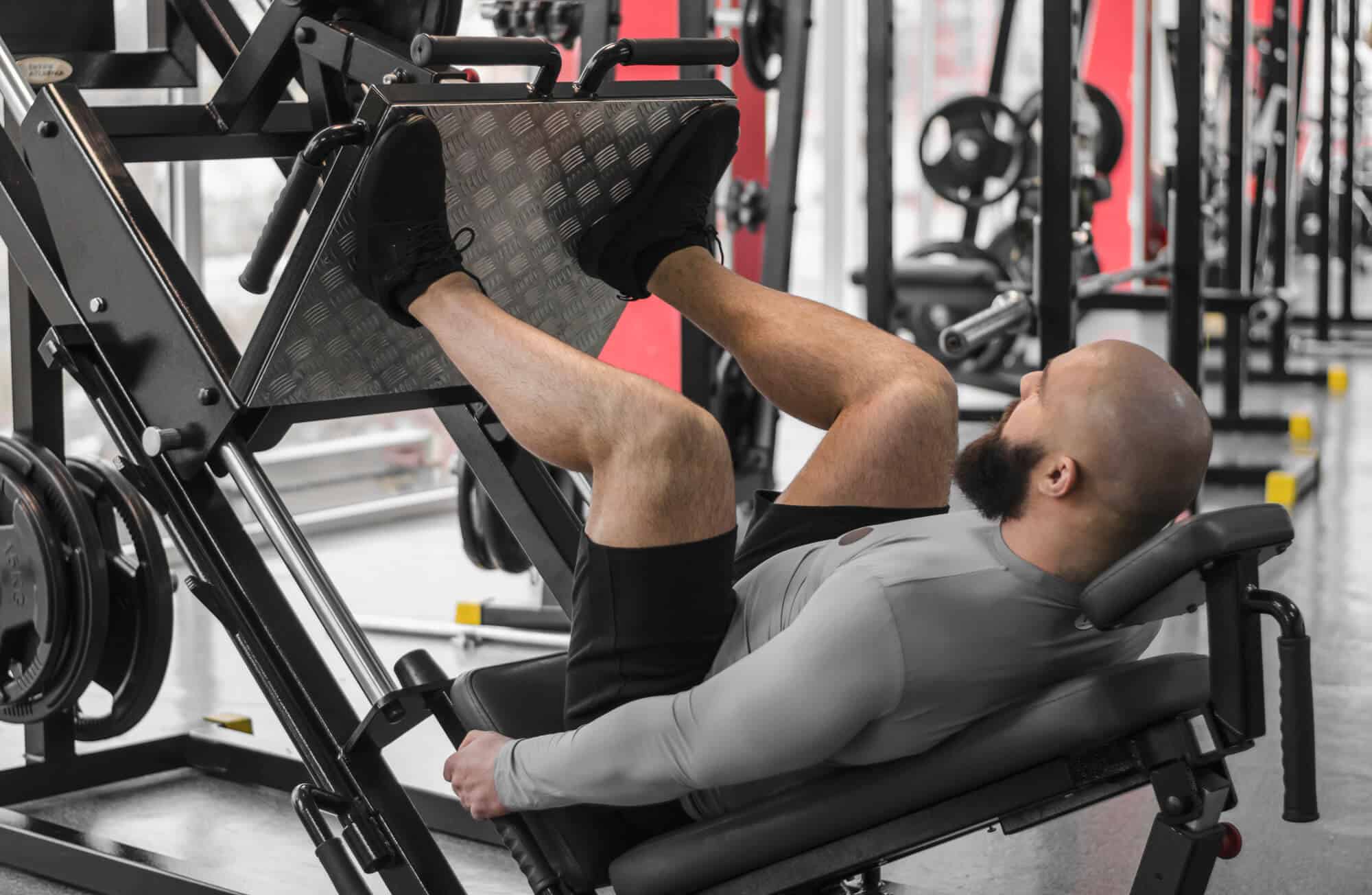Leg day is known for being one of the most intense workout days. In fact, a lot of people rest after leg days due to the delayed onset of muscle soreness.
Despite that, some runners may suggest scheduling a running day after leg day. So, is it a good idea? And what are the advantages and disadvantages of doing that?
In today’s article, we’ll walk you through a brief guide with everything you need to know about running after leg days and whether it is something you should be doing. So without further ado, let’s dive right in!
Running Day After Leg Day, Should You Be Running?
After leg days, your legs may feel a little sore due to the production of lactic acid in the muscles, which is a result of anaerobic respiration. This makes it quite difficult to do a lot of activities that involve walking or running.
While this pain can happen anywhere in the body after exercise, it’s more pronounced after leg days because leg muscles are among the largest in the body, so they produce more lactic acid.
Also, since you have to walk around, you immediately put them to the test, so you can’t rest them like arms.
Running after leg day can actually be good for you, as running aids in dissipating the lactic acid accumulated in the muscles and helps in shortening the delayed onset of muscle fatigue after a workout.
With that said, running the day after leg day can be possible and might even come with some benefits. However, it can also come with some drawbacks, so you have to do it only when it feels right. Keep on reading as we expand on the pros and cons of running after leg day.
Is Running With Sore Legs Dangerous?
To put it simply, the answer here depends on the severity of soreness. Of course, leg days will make your legs a little sore, and since running after leg day can be good for you, it shouldn’t be dangerous.
For example, if you’ve gone all the way while working out and your legs are quite sore that walking is a little difficult, running straight away might not be a good idea. Instead, you might do some jogging and running warm up to break down the lactic acid quicker.

On the other hand, if your training was mild and you don’t even feel sore after the workout, it’s totally acceptable to run, even at a high intensity.
What Are the Benefits of Running After Leg Day?
As previously mentioned, running after a leg day can actually be good for you. In this section, we’ll take a deeper look at those advantages and how they benefit you:
Can Help in Speeding Up Post Workout Recovery in the Long Run
The Delayed Onset Muscle Soreness is common after any form of workout. It happens when our muscles aren’t adapted to intense exercise and don’t have enough energy reserves, leading to anaerobic respiration and the production of lactic acid that makes the muscles sore.
However, if you run the following day after leg day, your muscle memory will adapt to the amount of exercise it’s put through.
This means that your leg muscles will store more energy to avoid anaerobic respiration in the future. In other words, your legs won’t be as sore after leg day as they used to.
An Excellent Combination for Weight Loss
If you want to lose weight, you have to keep your body in a state of caloric deficit, which is achieved by consuming fewer calories than you burn in a day. On leg days, you’re working out your leg muscles in order to increase their mass.
Since muscular tissue will burn more calories than fatty (adipose) tissue, building a larger muscle mass increases your general metabolic rate, and therefore, helps in weight loss.
Reduces Back Pain Due to Weak Lower Body Muscles
A lot of runners complain about lower back pain, which happens due to weaker leg muscles where they can support the weight of their upper body, which compresses their torso while running and causes discomfort.
By strengthening your posterior chain, you’ll get rid of the annoying back pain, which can improve your posture and performance as well!
What Are the Drawbacks of Running After Leg Day?
Despite all the benefits, running after leg days is something you need to do with some care, as it can potentially hurt you in some ways, such as the following:
May Reduce Muscle Gain and Performance
A 2016 study has found that participants who did cardio before workouts experienced reduced performance.
Similarly, it’s known that too much cardio will end up reducing your muscle mass. So, if it’s leg muscles you’re after, running the next day may not be a good idea.
Can Increase the Risks of Overuse Injuries
Running with heavy fatigue can have a negative impact on your body. When your muscles are too sore, you may not be able to run in proper form.
This may lead to some problems in the long run, such as overuse injuries. In other words, if you’re not careful enough or raise the intensity bar too high while suffering from fatigue, you might end up pulling or even tearing a muscle while exercising.
What Are the Best Leg Day Workouts for Runners

There are plenty of great exercises that you can incorporate into your leg day workout to improve your running performance.
Ideally, your exercise should target strengthening your posterior chain muscles, which include the hamstrings, the glutes, the calves, the erector spinae, and even your lats and shoulders. Here are some of the best leg day workouts to consider if you’re a runner:
- Calf Raises
- Lunges
- Squats
- Seated Leg Press
- Bulgarian Split Squats
- Stability Ball Leg Curl
- Back Extension
- Wall Sits
Things You Need to Keep in Mind When Running After Leg Day
Now that you know more about the benefits and the drawbacks of running after leg days, here are some valuable tips and things that you need to keep in mind if you’re going to run after leg days:
1. Consider Interval Training on the Day After Leg Day
If you want to make the most out of your post leg-day run, consider doing some interval training and explosive movements along with the run, especially if the fatigue didn’t kick in at full force.
This way, if you have a tempo run or sprint target for the week, you’ll be able to achieve it before you’re too tired to do it. Steady runs are then done on the following days to avoid overworking your legs.
2. Avoid Overtraining Yourself
Mind the fine line between making the most out of your workout and overtraining your body, which can lead to a lot of problems.
As previously mentioned, if you push your legs too hard during leg days, you might be putting a lot of fatigue and pressure on your legs by running the day after.
This excessive fatigue can easily increase the risk of injuries if you’re not careful enough. If your leg muscles are too sore that they’re becoming tight, injuries like pulled muscles or even tears might be quite likely.
If you feel that your muscles are too stiff the next day, forcing them into intense workouts like running is not a good idea.
3. Include a Proper Recovery Routine Between Workouts
Just because we’re talking about the benefits of post-leg day runs, doesn’t mean that recovery isn’t critical for your performance and safety.
Ideally, you need to schedule your week so that you have at least two separate days as rest days.
This way, you’ll be able to make the most out of your workouts. In fact, if your legs are too sore after running and you really can’t walk or run, scheduling your day off after leg days is your best bet.
4. Assess the Pain and Stop Running If It’s Unusual or Too Sharp
Just because your legs are in pain after workout and leg days, doesn’t mean that it is fatigue pain. It’s always important that you assess your pain and see if it’s too sharp or not like the usual soreness after runs.
Early intervention is one of the key methods to avoid worsening the injuries, so don’t immediately rule out the possibility of an injury and stop running when the pain is too sharp to handle.

5. Always Start Both Sessions with Proper Stretching and Warming Up
Warming up your muscles and doing proper stretches will not only reduce the chances of an injury while running, but also helps in breaking down the lactic acid accumulated in the muscles from the day before.
6. Optimize Your Diet to Avoid Muscle Loss
We’ve talked earlier about the potential muscle mass loss that can happen when you do a lot of cardio straight after workouts, especially if there isn’t enough time gap between the two exercises.
One of the leading factors in this muscle loss is inadequate diet habits. Ideally, you need to make sure that your diet is rich in protein and essential amino acids in order to provide the body with all the needed nutrients to support your muscle mass and prevent muscle loss.
If you’re not getting enough proteins in your diet or you’re vegetarian, supplementation with proper protein power is quite necessary in order to prevent muscle loss from taking place.
Remember to also drink plenty of water and provide your body with all the necessary electrolytes to make up for the lost ones.
7. Listen to Your Body
Last but not least, it’s always essential that you listen to your body at all times. If you feel something is not right, make sure that you stop right away and only continue when you’re sure that there’s no harm in keeping on going.
Wrap Up
There you have it! A brief guide that walks you through everything you need to know about running day after leg day and whether it is a good idea for you.
As you can see, running after leg day has its own set of pros and cons. However, the benefits of doing so heavily outweigh the drawbacks.
However, while running, you need to always make sure that the pain is relatively tolerable and that you don’t overdo this combination.
Additionally, remember to give your body plenty of rest on other days to avoid running into problems like overuse injuries and excessive fatigue.

